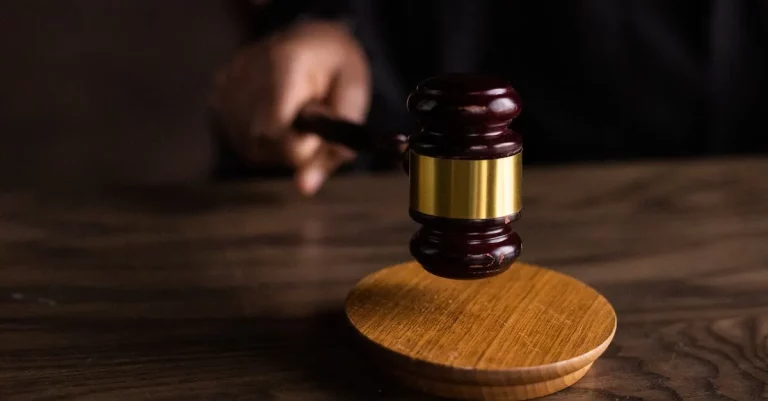Can I Remove My Neighbor’S Fence From My Property In Texas?
Property line disputes between neighbors are common, especially when a fence is erected on your land without consent. As a Texas property owner, you may be wondering if you can legally remove your neighbor’s fence that encroaches on your land. While you have rights, there are also risks to consider.
If you’re short on time, here’s a quick answer: In Texas, you can legally remove your neighbor’s fence from your property if it was built there without permission, but notifying your neighbor first and settling the dispute civilly is recommended to avoid potential liability.
Texas Laws and Fence Encroachment
Dealing with fence encroachment issues can be a source of frustration for many property owners. If you find yourself in a situation where your neighbor’s fence is encroaching on your property, it’s important to understand the laws and regulations in Texas regarding this matter.
Adverse Possession
Adverse possession is a legal concept that allows a person to gain ownership of someone else’s property through continuous and uninterrupted possession for a specified period of time. In Texas, the requirements for adverse possession include open, notorious, exclusive, and continuous possession for a period of 10 years.
However, it’s important to note that adverse possession laws vary from state to state, so it’s always best to consult with a legal professional regarding your specific situation.
If your neighbor’s fence has been encroaching on your property for an extended period of time, and you have not taken any legal action to address the issue, there is a possibility that your neighbor could claim adverse possession.
To avoid this potential outcome, it’s crucial to take prompt action by contacting a lawyer and discussing your options.
Property Line Laws
Another important aspect to consider when dealing with fence encroachment in Texas is property line laws. Texas follows the “good faith” rule, which means that if a person erects a fence in good faith, believing it to be the true property line, they may have a legal defense against any claims of encroachment.
However, if it can be proven that the fence was intentionally placed over the property line, the neighbor may be liable for the encroachment.
It’s worth noting that property line disputes can be complex, and resolving them often requires a thorough examination of surveys, deeds, and other legal documents. Consulting with a qualified attorney who specializes in property law is highly recommended to ensure you understand your rights and options.
Remember, it’s always best to approach these situations with open communication and a willingness to find a solution that works for both parties. Disputes over fences can often be resolved through mediation or negotiation, avoiding the need for costly and time-consuming litigation.
For more detailed information on Texas laws regarding fence encroachment and property disputes, you can visit the official website of the State Bar of Texas at https://www.texasbar.com/.
Can I Remove an Encroaching Fence in Texas?
Dealing with an encroaching fence on your property can be a frustrating situation for any homeowner in Texas. However, before taking any action, it is important to understand the legalities involved in removing a neighbor’s fence. Here are some key considerations to keep in mind:
Notify Your Neighbor
The first step is to communicate with your neighbor about the encroachment issue. It is always best to approach the situation amicably and try to resolve the matter through mutual understanding. Let them know about the situation and discuss possible solutions.
Providing them with a chance to rectify the issue themselves can help maintain a healthy neighborly relationship.
Offer to Pay for Removal
If your neighbor is unwilling or unable to remove the encroaching fence, you can offer to pay for its removal. By taking the initiative to resolve the problem, you demonstrate goodwill and a willingness to find a fair solution.
Remember to keep a record of your offer and any communication regarding the matter, as it may be useful if legal action becomes necessary.
Self-Help as a Last Resort
If all attempts to resolve the encroachment issue fail, you may consider self-help as a last resort. However, it is crucial to consult with a legal professional before taking any action. Texas law allows for self-help measures under certain circumstances, but it is important to ensure that you are fully within your rights and not violating any laws.
Note: The information provided here is not legal advice. It is always recommended to consult with a qualified attorney to understand the specific laws and regulations in your area.
For more information on property laws and neighbor disputes in Texas, you can visit the Texas Statutes website.
How to Remove a Neighbor’s Fence Legally
Confirm Property Lines
Before taking any action to remove your neighbor’s fence, it is crucial to confirm the exact boundaries of your property. This can be done by consulting a professional surveyor or by referring to the property survey conducted when you purchased your home.
It is important to have clear evidence of the property lines to avoid any legal disputes or conflicts with your neighbor.
Minimize Damage
When removing a neighbor’s fence, it is essential to minimize any potential damage to both your neighbor’s property and your own. Carefully assess the situation and determine the best approach to avoid causing unnecessary harm.
If possible, try to collaborate with your neighbor and discuss the removal process to find a mutually beneficial solution.
Photograph Removal
It is recommended to document the process of removing your neighbor’s fence by taking photographs before, during, and after the removal. These photographs can serve as evidence in case any legal issues arise in the future.
Additionally, it is always a good idea to keep a record of any communication or agreements made with your neighbor regarding the fence removal.
Dispose of Materials Properly
After successfully removing your neighbor’s fence, it is important to dispose of the materials properly. Check with local regulations and guidelines for the proper disposal methods. You may need to contact your local waste management facility or recycling center to ensure that the materials are disposed of in an environmentally-friendly manner.
Remember, it is crucial to approach the removal of your neighbor’s fence legally and with respect for their property. If you are unsure about the legality or potential consequences of removing the fence, it is always recommended to seek legal advice from a professional.
Liability Risks of Removing a Fence
Before considering removing a neighbor’s fence from your property in Texas, it is essential to understand the potential liability risks involved. While disputes over property boundaries can be frustrating, taking matters into your own hands without legal authority can result in serious consequences.
Trespassing
Removing your neighbor’s fence without their permission can be considered trespassing. Trespassing is defined as the unauthorized entry onto someone else’s property. In Texas, trespassing is a civil offense, and individuals found guilty may be required to pay damages to the property owner.
In some cases, trespassing can even lead to criminal charges, especially if it involves intentional damage or theft of property.
It is crucial to respect your neighbor’s property rights and seek legal advice before taking any action that may infringe upon those rights. By doing so, you can avoid potential legal trouble and maintain a good relationship with your neighbors.
Vandalism or Criminal Mischief
Removing a fence without proper authorization can also be seen as vandalism or criminal mischief. Vandalism involves willfully damaging or destroying someone else’s property, while criminal mischief refers to intentionally tampering with property to cause inconvenience, annoyance, or harm.
Both offenses can have serious legal consequences, including fines, probation, or even imprisonment.
It is always advisable to resolve property disputes through legal channels rather than resorting to illegal activities. Consulting with a property attorney can help you understand your rights and options while avoiding the risk of criminal charges.
Personal Injury or Property Damage
Removing a fence without proper precautions can also pose a significant risk of personal injury or property damage. Fences are often secured in the ground with concrete or other sturdy materials, making them potentially hazardous to remove without the necessary equipment or expertise.
Additionally, removing a fence hastily or without proper care could result in damage to the fence itself or neighboring properties.
It is essential to prioritize safety and avoid potential accidents or property damage. If there are concerns about the condition or placement of a fence, it is advisable to consult with local authorities or hire a professional surveyor to assess the situation and provide appropriate guidance.
Remember, removing a neighbor’s fence without permission is not a recommended course of action in Texas. It is crucial to understand the potential liability risks involved and seek legal advice to resolve property disputes properly.
Alternatives to Removing a Fence
If you find yourself in a situation where you are considering removing your neighbor’s fence from your property in Texas, it’s important to explore alternative options before taking any drastic measures. Here are some alternatives to consider:
Negotiate with Neighbor
Communication is key when it comes to resolving disputes with neighbors. Before taking any legal action, try having a calm and respectful conversation with your neighbor about the issue. Explain your concerns and see if you can reach a compromise or find a mutually beneficial solution.
You might be surprised at how willing your neighbor is to work things out.
Mediation
If direct negotiation doesn’t yield any results, you may want to consider mediation. Mediation is a voluntary and confidential process where a neutral third party helps facilitate communication and assists in finding a resolution.
This can be a great alternative to going to court, as it allows both parties to have a say in the outcome and can save time and money.
Lawsuit
If all else fails and you believe that removing your neighbor’s fence is the only option, you may decide to take legal action. However, it’s important to consult with an attorney who specializes in property law to understand the legalities and potential consequences of pursuing a lawsuit.
Going to court should be a last resort, as it can be a lengthy and costly process.
Remember, it’s always best to try and resolve conflicts amicably and avoid escalating the situation. Seeking legal advice and exploring alternative options can help ensure a fair and peaceful resolution to the issue.
Conclusion
Removing your neighbor’s fence from your Texas property without permission comes with inherent risks. To avoid liability, try settling the dispute amicably by communicating with your neighbor, double checking the property lines, and providing compensation. As a last resort, self-help removal may be an option, but should always be done carefully, legally, and safely to protect yourself.








